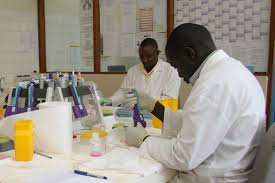Researchers announce launch of new vaccines for HIV
Medical Researchers announced the launch of
two big studies in Africa on Thursday to test a new HIV vaccine and a
long-acting injectable drug, fuelling hopes for better ways to protect against
the virus that causes AIDS.
The start of
the three-year vaccine trial involving 2,600 women in southern Africa means
that for the first time in more than a decade there are now two big HIV vaccine
clinical trials taking place at the same time.
The new
study is testing a two-vaccine combination developed by Johnson and Johnson
(J&J) with the U.S. National Institutes of Health (NIH) and the Bill and
Melinda Gates Foundation.
The first
vaccine, also backed by NIH, began a trial last November.
At the same
time, GlaxoSmithKline’s majority-owned ViiV Healthcare unit is starting another
study enrolling 3,200 women in sub-Saharan Africa to evaluate the benefit of
giving injections every two months of its experimental drug cabotegravir.
The ViiV
initiative, which is expected to run until May 2022, also has funding from the
NIH and the Gates Foundation.
Women are a
major focus in the fight against the sexually transmitted disease since in
Africa they account for more than half of all new HIV infections.
ViiV is also
running another large study with its long-acting injection in HIV-uninfected
men and transgender women who have s*x with men.
That study
started in December 2016.
Although
modern HIV drugs have turned the disease from a death sentence into a chronic
condition and preventative drug treatment can help, a vaccine is still seen as
critical in rolling back the pandemic.
The latest
vaccine experiments aim to build on the modest success of a trial in Thailand
in 2009, when an earlier vaccine showed a 31 per cent reduction in infections.
“We’re
making progress,” said J&J Chief Scientific Officer Paul Stoffels, who
believes it should be possible to achieve effectiveness above 50 per cent.
“That is the
goal. Hopefully, we get much higher,” he told Reuters.
The new
vaccines require one dose to prime the immune system and a second shot to boost
the body’s response.
Significantly,
J&J’s latest vaccine uses so-called mosaic technology to combine
immune-stimulating proteins from different HIV strains, representing different
types of virus from around the world, which should produce a “global” vaccine.
One reason
why making an HIV vaccine has proved so difficult in the past is the
variability of the virus.
Initial
clinical results reported at an AIDS conference in Paris in July showed the
mosaic vaccine was safe and elicited a good immune response in healthy
volunteers.
Some 37
million individuals around the world currently have HIV and around 1.8 million
became newly infected in 2016.



Comments